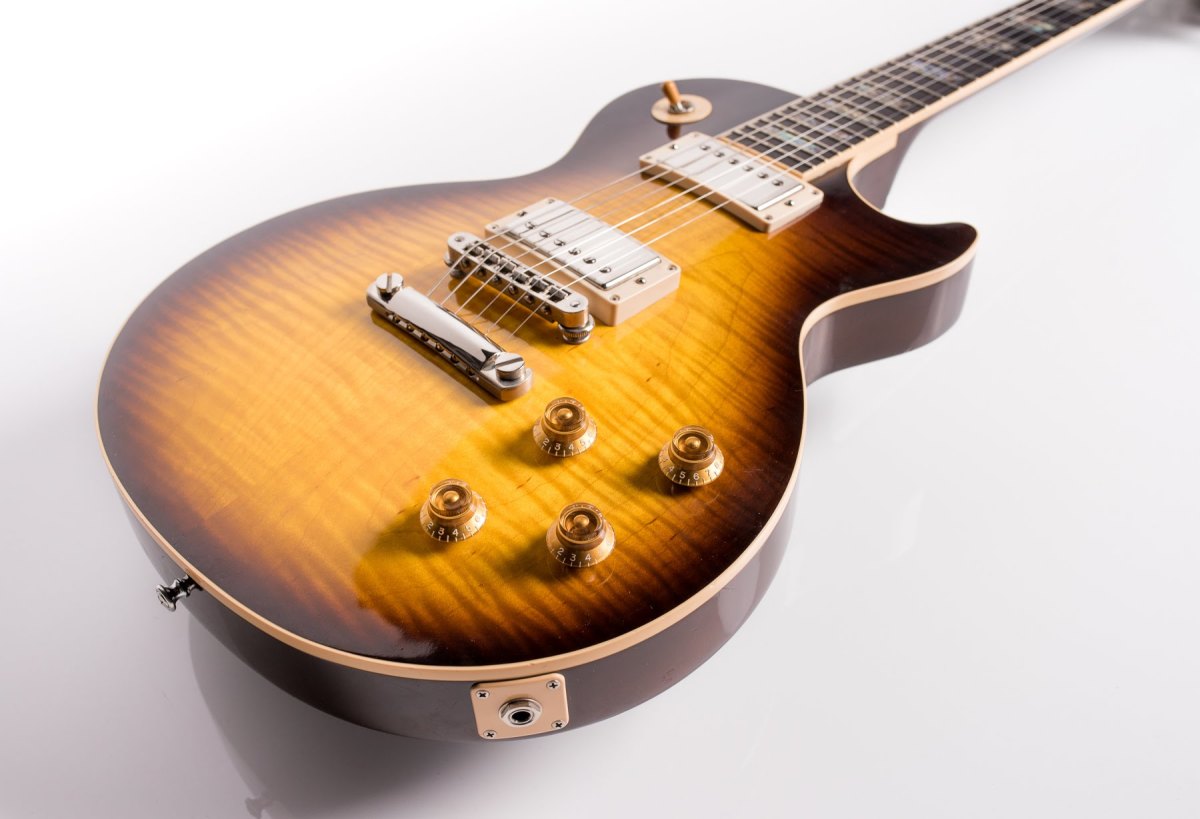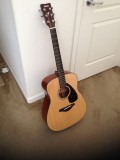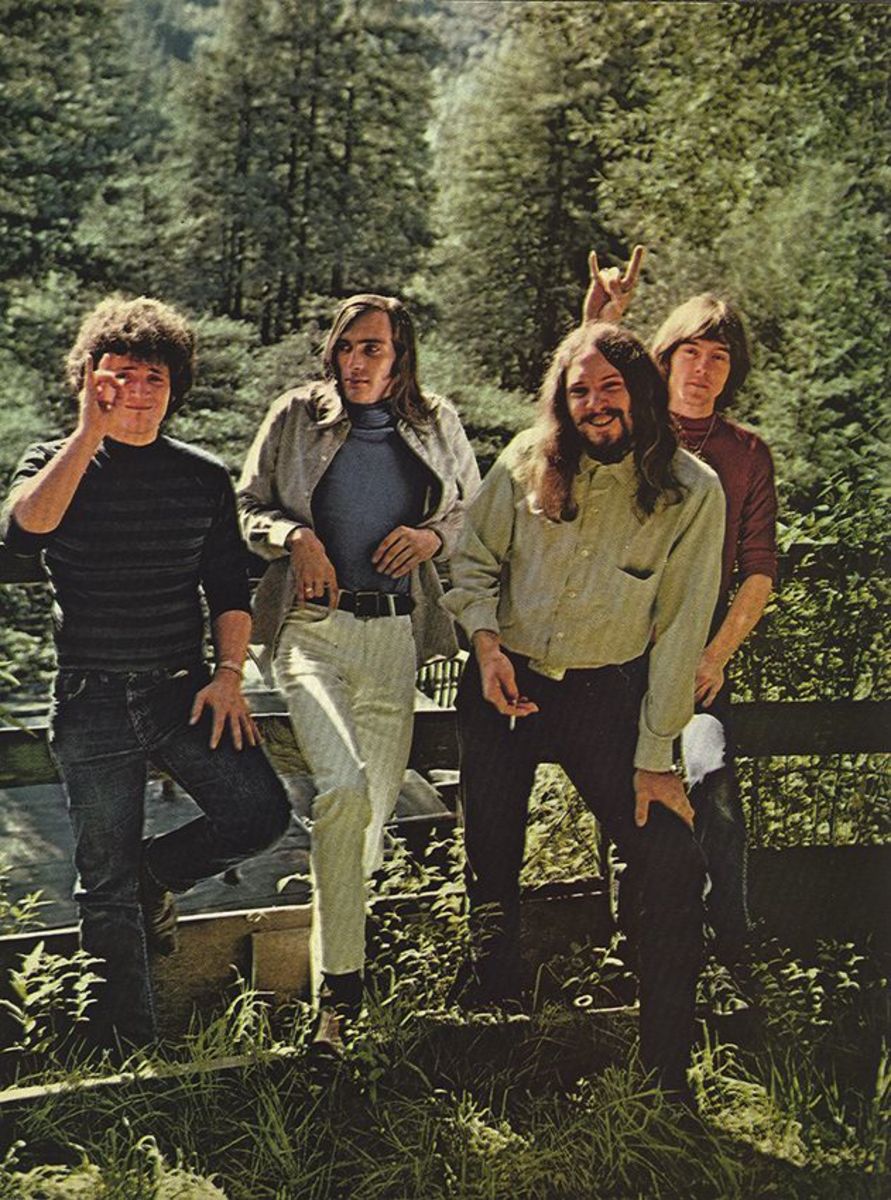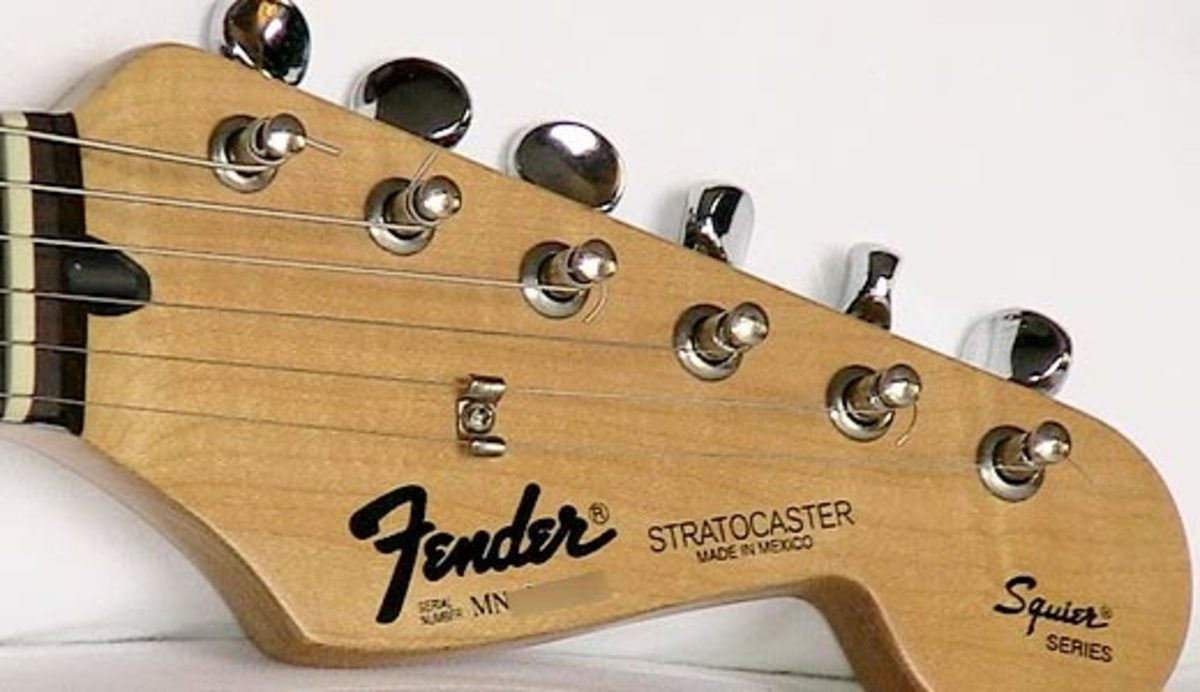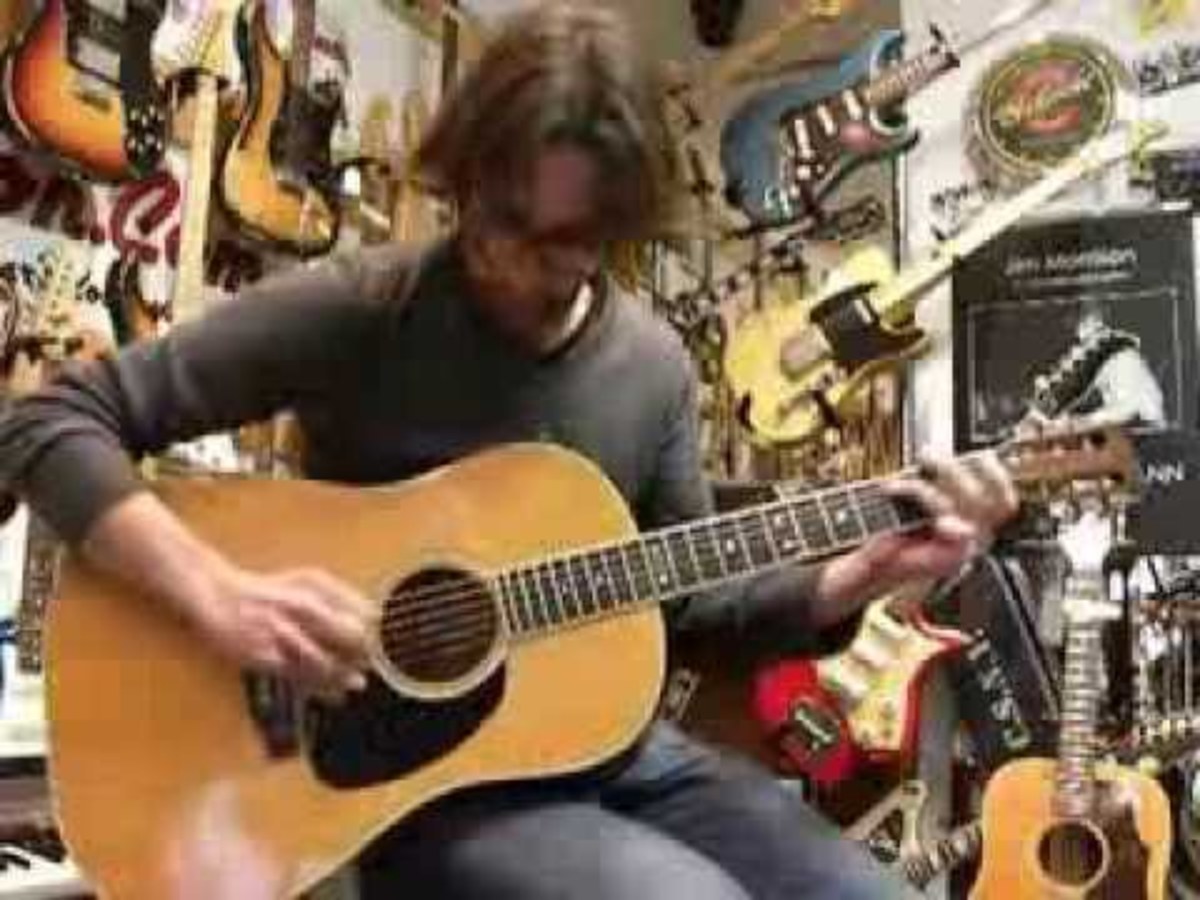Getting Started on Finger Picking
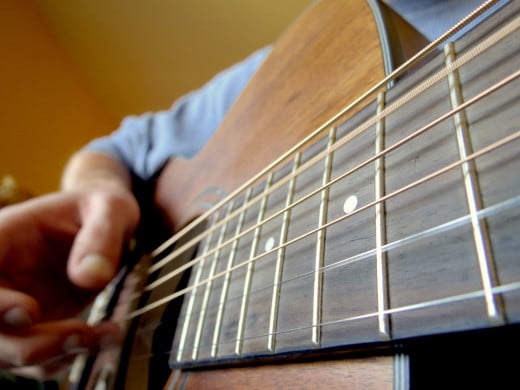
Many novice guitarists, when they first pick up a guitar, will dabble around with it and pluck the strings with their fingers. At least that’s what I did. My first guitar did not come with any picks, so I thought that people just played with their index finger and thumb pressed together in a picking motion. It wasn’t until I looked a bit closer to the hands of a guitarist that I noticed there was a tiny, pointy piece of plastic grasped between those fingers.
Most guitarists dabble with their fingers to get a feel for playing. Sometimes they will stick with that for a bit, because holding a pick for the first time is quite awkward. Eventually they step out of their comfort zone and start using the pick more and more. Once they get used to it, they think “finally, I can call myself a guitarist now.”
Yes, it’s safe to say that the majority of guitarists nowadays use a pick, but that’s no reason to throw finger picking in the trash. True guitarists can play both styles. Why? Because there are certain tones that can be achieved through finger picking, just like there are certain songs that require a speedy and accurate picking style. While finger picking is primarily a technique used for acoustic pieces, exceptions can certainly be made. Look at the playing of Mark Knopfler of Dire Straits for example. Many guitarists are surprised to learn that the man never uses a pick. However, when you listen a second time, it makes sense that the “Sultans of Swing” solo just would not have that incredible, twang and slap if it were played with a pick.
For me, I learned that I have more control in many instances when I play with my fingers. This is especially true for pieces that require a lot of string jumping as well as hammer ons and pull-offs. As I said before, a pick is the better choice in many songs but it is always a good idea to know both styles so you can play each song in the best way you can.
Here are some tips for getting you started with finger picking:
Make a Decision: Fingertips, Long Nails or Finger Picks
The majority of finger pickers out there have long nails that allow them to pluck each string with a similar strength and tone as with a guitar pick. I tried to grow my nails out many times and two things would always happen: I would either get sick of them and bite them off compulsively or rediscover that I have very weak nails. Maybe it’s something in my diet or just the cards that I were dealt, but the longer my nails would grow, the weaker they became. So I was left with two choices: either play with my fingertips or purchase some finger picks.
Finger picks are exactly what they sound like: guitar picks that fit on your fingers like rings. They are supposed to mimic the feel of a strong set of fingernails, but I never found that to be the case. I was never able to find a set that felt natural and that I could just pluck away like I weren’t wearing them. But that was just my experience. They are tools used by many finger pickers out there. I could have probably gotten used to them, but I found that my playing was much more accurate and consistent with my fingertips. Yes, I can’t get the power that I would with fingernails or finger picks, but I have learned to enjoy the soft and mellow tone that I can get with my dull fingertips.
My advice would be to try growing out your fingernails first and see how that goes. It’s a win-win because you will be able to practice with your fingertips in the meantime. If neither of those work out for you, head up to Guitar Center and sample out some finger picks. Just like with regular guitar picks, they have a variety of gauges and sizes available. Whichever method feels the most natural from the beginning, I say stick with that one.
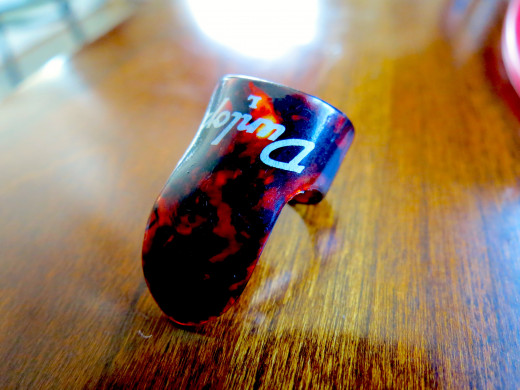
Inspiration
Now that you have found a method of finger picking that suits you the most, the next step is to start learning some songs that feature finger picking. I’ll name some songs and artists here that really helped me develop my finger picking technique. The tabs to each song can be found with a simple search on Songsterr or other guitar tab websites. Most of them range at the intermediate level; nothing at the expert level, I promise.
Robby Krieger - The Doors
The Doors were known for being one of the big-time psychedelic bands in the late 1960’s, as well as their multitude of different musical influences. Krieger is no exception to that. Having been a flamenco guitarist before joining the band, he brought a special style into the group’s music, which included exotic melodies and scales, not to mention finger picking. I thought he was a good choice because most of his work is relatively easy and is played using the finger picking style.
While there many choices of songs of Krieger’s that you could choose from - “Love Me Two Times” and “People Are Strange”, to name a few – I would highly suggest giving “The End” a try. I would categorize this as his masterpiece. It’s one of the most unique guitar pieces I’ve ever heard. It’s got this mesmerizing quality to it that not only is fascinating to listen to, but to play as well. Anything that can put you in that zone is always a great song to learn and practice.
If you dig Krieger’s style, keep going with it. Try to build up to more difficult songs like “Spanish Caravan.” I promise that one will be a good challenge.
The Doors - The End
Jeremy Galindo and Chris King - This will Destroy You
The first time I heard the guitar work of Galindo and King, I was blown away. I always find it fascinating when guitarists can turn simplicity into beauty. It just helps support the notion that emotion can blow virtuosity out of the water any day. Don’t get me wrong, I love to watch those guys and girls out there that can sweep pick and play until it sounds like their fingers about to fall off, but in the end it’s emotion that will keep me coming back for more.
It’s hard to describe their guitar work, aside from using cliché words like “soothing” and “serene”, so I will let you take the sound with your own interpretation. I decided on their song “They Move on Tracks of Never-Ending Light.” I feel that this a good exercise in both chord work and tone control. It will teach you to find a good middle ground between loud and soft. Although the piece is done on an electric guitar with a clever use of reverb and delay, it also sounds great on an acoustic guitar in my opinion.
This Will Destroy You - They Move on Tracks of Never-Ending Light
Kerry Livgren - Kansas
“Dust in the Wind” is a very conventional choice for finger pickers out there. In fact, the guitar part was actually written by Livgren as a finger picking exercise to develop his technique. A great exercise it is indeed. It hones your chord changes as well as develops finger picking patterns. On the first listen, the song can sound quite intimidating to the novice guitarist, but once you break down the parts it’s relatively simple. There are a few different ways you can tackle this song. The first is to just familiarize yourself with the chord progression and start by strumming them along with the song. From there, you can mesh in the finger picking patterns one chord at a time. The other is to reverse that process. Start with the finger patterns and then bring the chords in once your comfortable.
Kansas - Dust in the Wind
Closing Words
If you feel like you’re not at the level to begin with learning songs, there’s nothing wrong with just dabbling. Take some chord progressions that you have already learned and instead of strumming them, start plucking different strings in a similar rhythm and see what types of sounds you can get. A good exercise is to try to use all of your fingers in these sequences, including the thumb and pinky. When I first started, I favored the index, middle and ring fingers, but soon discovered that I could cover more ground by exercising all my fingers at once. It may sound cliché, but the most helpful tip is to enjoy yourself. Play something that you can hear over and over again without getting bored.


